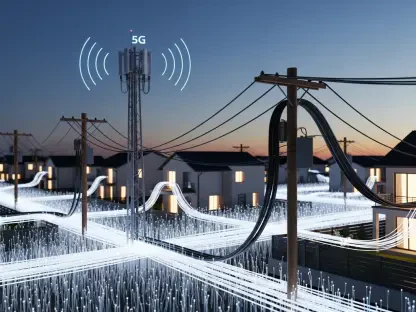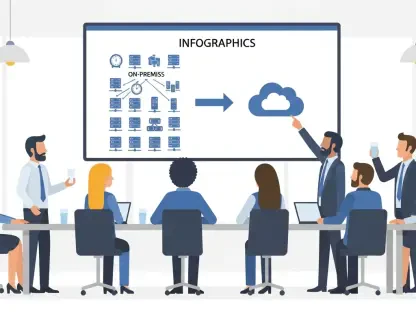The telecom industry is witnessing a transformative era where advanced artificial intelligence (AI) is significantly optimizing network operations. This shift is highlighted by the deployment of large telco models (LTMs) and AI agents, powered by NVIDIA AI Enterprise software, as discussed in NVIDIA’s recent global AI conference.
The telecommunications sector handles monumental data flows from millions of user connections, encompassing unstructured and complex data sets from sources such as base stations, routers, switches, and data centers. Traditional automation tools have struggled to efficiently manage the vast real-time workloads of more than 3,800 terabytes of data generated per minute. In response, NVIDIA has facilitated the development of LTMs and AI agents tailored specifically for the telco industry.
LTMs are multimodal large language models engineered for telco network data, playing a crucial role in developing network AI agents. These agents are designed to automate complex decision-making workflows, enhancing operational efficiency, employee productivity, and network performance. Industry leaders such as SoftBank, Tech Mahindra, Amdocs, BubbleRAN, and ServiceNow have emerged at the forefront of AI deployment in telecommunications using NVIDIA’s technology.
SoftBank has pioneered an LTM derived from an LLM trained on proprietary network data, initially geared towards network configuration. This model can autonomously reconfigure network settings in response to traffic variations, proving crucial during large events. SoftBank is also supporting AI adoption by providing network agent blueprints.
Tech Mahindra, leveraging NVIDIA’s advanced AI tools, developed the Adaptive Network Insights Studio, which offers a comprehensive view of network issues through detailed automated reports. Additionally, their Proactive Network Anomaly Resolution Hub autonomously resolves many network events, significantly boosting engineer productivity.
Amdocs’ contributions include the Network Assurance Agent, which automates tasks like fault prediction. This agent also conducts impact analysis and provides step-by-step guidance for issue resolution. The Network Deployment Agent by Amdocs further simplifies open radio access network (RAN) adoption through automated integration and testing.
BubbleRAN is creating an autonomous multi-agent RAN intelligence platform on cloud-native infrastructure, using LTMs to observe and manage network states and key performance indicators (KPIs). This platform automates network reconfiguration and policy enforcement through advanced tools.
ServiceNow’s AI agents, built with NVIDIA AI Enterprise on NVIDIA DGX Cloud, aid in productivity by generating resolution playbooks and predicting network disruptions. These agents conduct root-cause analysis, expediting problem resolution, and preventing future disruptions, thus improving customer satisfaction.
A significant portion of the telecom sector has begun integrating AI into network operations, with 40% of respondents in an NVIDIA survey indicating deployment in 2025. The specialized capabilities of LTMs enable them to understand real-time events, predict failures, and automate resolutions efficiently. These models continuously adapt and improve through post-training scalability provided by NVIDIA NeMo, ensuring ongoing optimization.
In conclusion, the advent of advanced AI in telecommunications has led to crucial advancements including reduced network downtime, enhanced customer experiences, and improved security. The integration of LTMs and microservices with NVIDIA AI technologies represents a forward step in revolutionizing network operations, making it essential for future telecom strategies.









